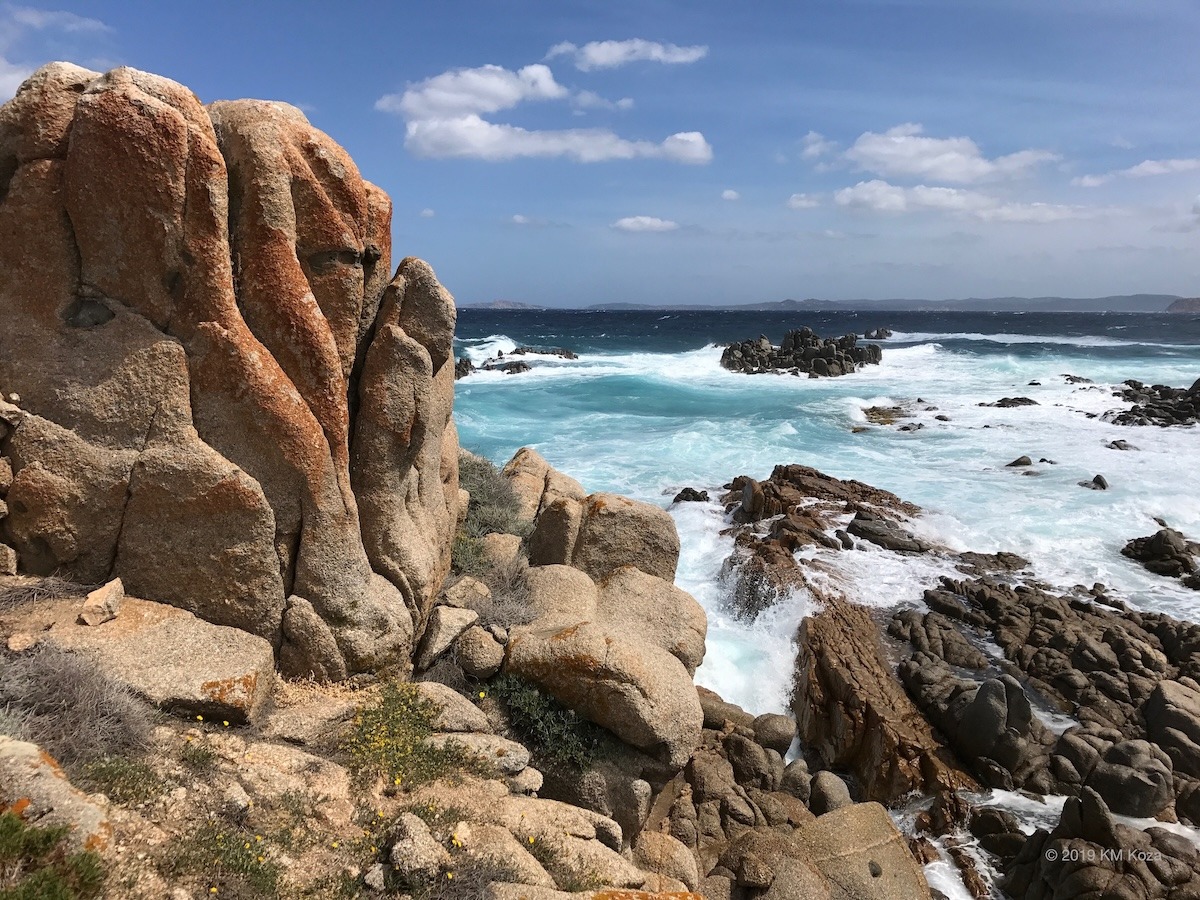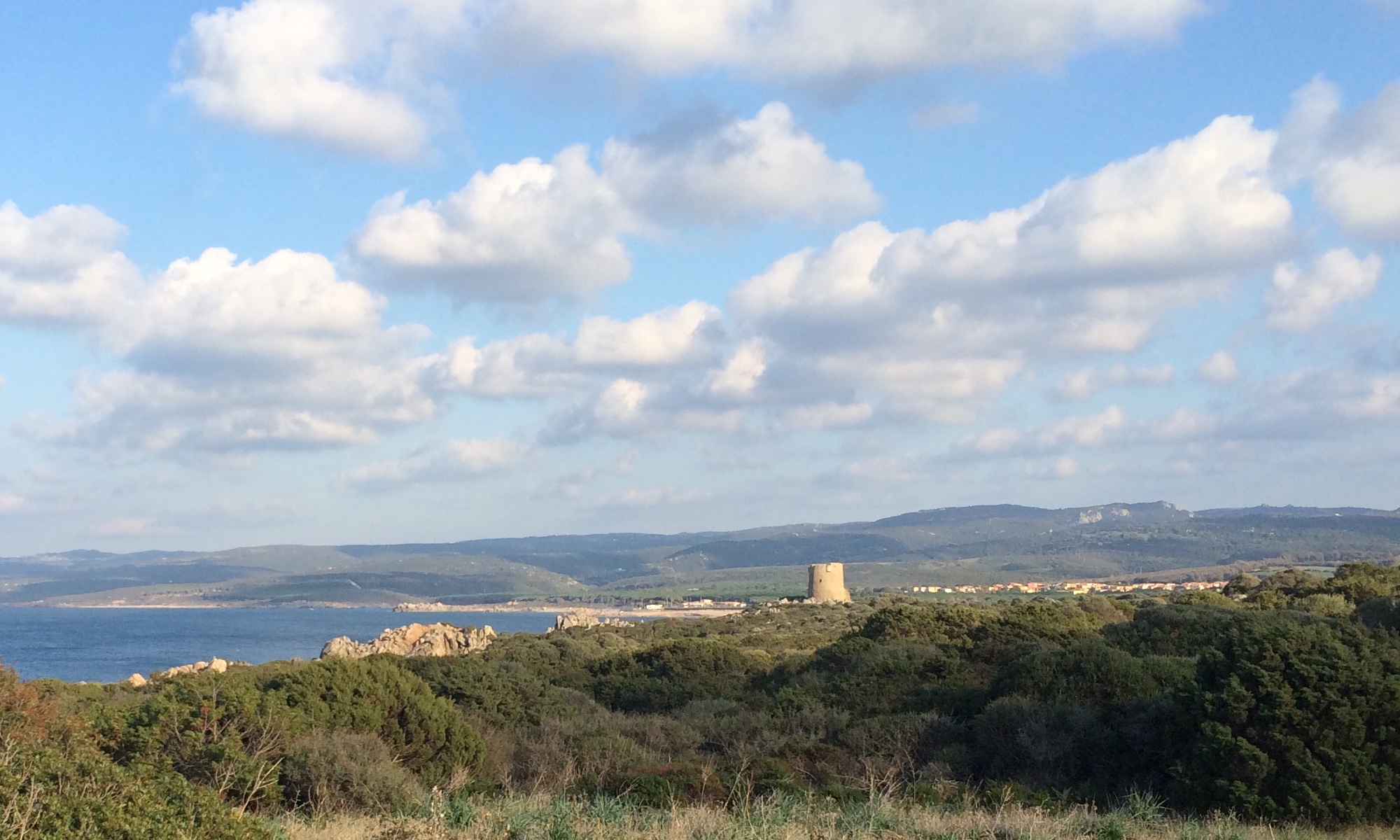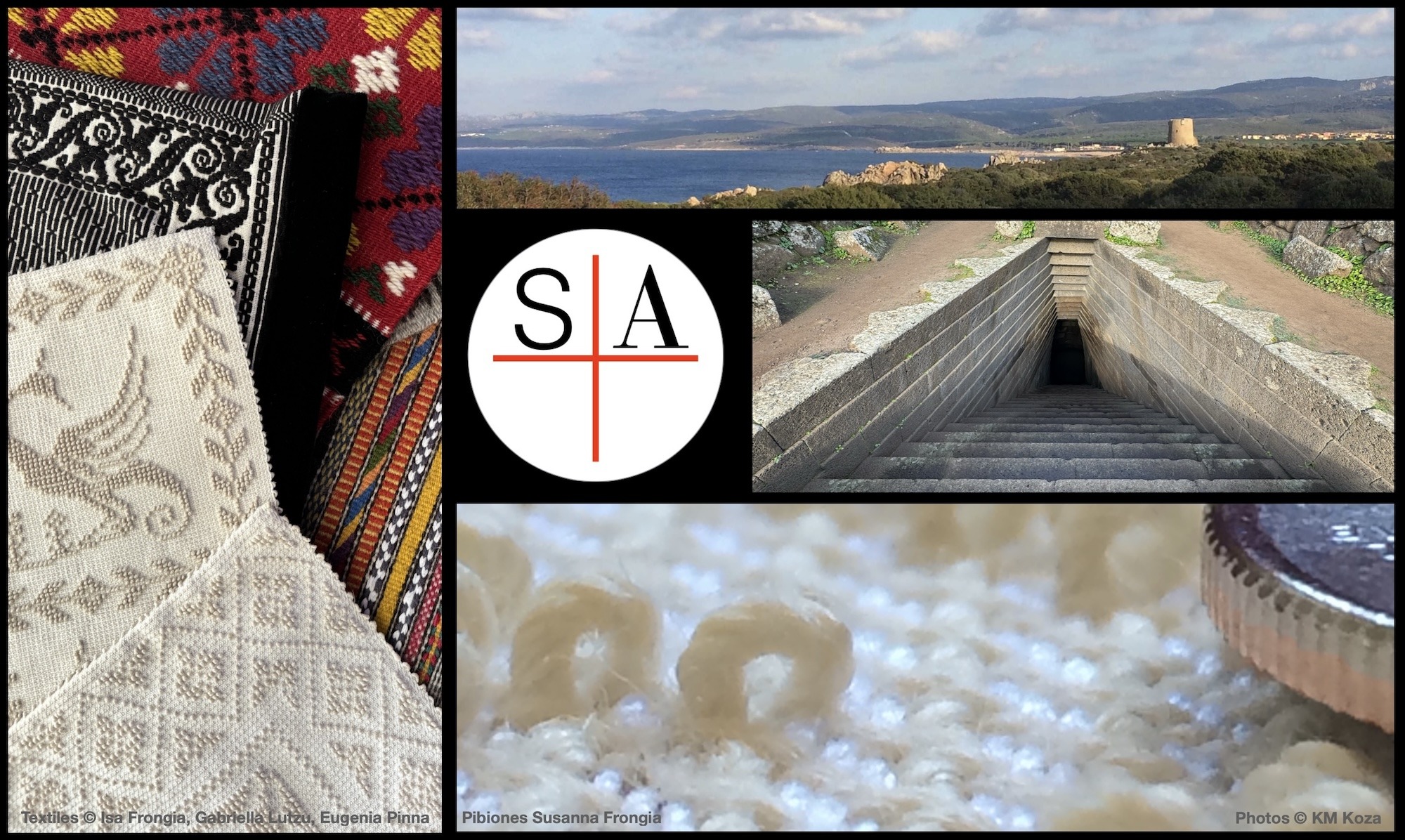In this episode, Kelly Manjula Koza answers the question she’s often asked: “How it is that you came to know about Sardinia and her weavers?”

Transcript
People often ask how it is that I came to know about Sardinia, the weavers, and to work with them.
It’s rather complex and amazing story full of synchronicity, and it reaches back to my childhood. I like to tell the story using textile terms of warp (the foundational threads of a textile) and weft (the threads that are later interwoven into the warp). I think it’s easier to understand this way!
The first warp thread is that I had the good fortune to grow up with a mother, Carole, who was an amazing designer and maker who could figure out anything and make anything. She was especially adept with textiles. An incredible seamstress, she made most of her own clothes, and many of mine when I was young. She could design, make, repair, upholster, or improve anything. She also crocheted, embroidered, and did a bit of weaving. I watched her and listened to her explain her techniques, learned how things were constructed, and came to appreciate what it took to make something by hand — particularly clothes and textiles. While I didn’t want be behind the sewing machine doing this myself — I wanted to be outside playing sports, or off in a corner reading a book — I always loved watching her work, and loved going to the fabric store with her because I loved the sight, feel, and beauty of the cloth. I learned much from my mom, and gained a great appreciation of the fiber arts, fabric, and what it took to make textiles. I also gained a great appreciation of the handmade, and the women (it’s usually women!) who make textiles and textile-based items by hand. I could also, from what my mom taught me, identify by both physical characteristics and sense, when something was handmade.
When I went to university, this appreciation grew even further. I majored in Design, and at the University of Arizona, my favorite courses were the Fiber Arts courses taught by Gayle Wimmer. Gayle was an internationally renowned fiber artist who had worked in six or eight different countries before and during her time running the Fiber Arts Department at the UofA. Gayle was a huge influence, expanding my knowledge and appreciation of the fiber arts, of international artists, and even of languages (which I always loved — and she was fluent in six!). However, while Gayle deepened my love and appreciation of textiles, I knew becoming a weaver was not my path — if anything, I sensed that one day I might collect textiles, out of my love for them and to support the women artists who make them.
This love of textiles from an early age is obviously a key warp thread, foundational in this story of what led me to Sardinia and the weavers. Another such thread also comes from my childhood: The tactile memory of a certain bedspread we had when I was an infant. The memory is of a bedspread filled with bumps of fabric, in a pattern I used to run my hand over and over. While the bedspread disappeared when I was a young child, the memory persisted. In the early 2000’s, I tried to find a similar bedspread. Since my mom had passed a few years prior, I could not ask her for any helpful information. I searched and searched, but could find nothing. I had no idea what the bedspread type was called, or even where to look beyond the stores and internet. I gave up, yet the memory of that bedspread persisted.
The final thread of the warp laying the foundation of this story is another childhood memory. When I was young, and even into my 20’s, I had a recurring dream of an absolutely stunning and unique beach: The water was a clear yet deep blue, absolutely beautiful. The sky was a different hue of blue, yet equally, amazingly blue. In the foreground was a beach of fantastically-shaped giant rocks. In the distance, I saw the silhouette of another island rising out of the water. I somehow knew this was an island, but I never knew where it was. Sometimes I thought it was might be along California’s Pacific Coast. Other times, I thought perhaps it was Wales, or Greece, or — no, none of those were quite right. Mediterranean — perhaps “Italy but not Italy”. That felt right. But I wasn’t even certain if this was a real island, or just an island of my dreams!
So these are foundational warp threads of the story: A love and appreciation of textiles and their makers; a bumpy bedspread, and a magical mysterious island of my dreams.
The weft threads that fill in and complete the story began in about 2012. That’s when I began to study Italian (which is another story in itself). In early 2013 I read my first book in Italian. It was a biography, and Sardinia was a key location mentioned. I knew where Sardinia was, but I didn’t know where Gallura was on the island. Like any of us do when we’re studying a new language or a new topic and we want to learn something, I went online to search. I entered “Gallura Sardinia” — and what popped up on the screen sent shivers down my spine.
I was looking at photos of the exact same coastline that I had seen so often in my dreams.
I still get shivers thinking about that moment. And – of course I had to go to this coastline, this island of my dreams.
In September 2013, I made my first trip to Sardinia. A friend came with me, and of course we visited the beaches in Gallura, and more. I would have been content to stay at the beach the entire short trip, yet my friend wanted to visit some of the little towns on the northeast tip of Sardinia, one in particular, so we did. The town was once a fishing village, and over time had come to cater more to tourists. As we walked around the old downtown area, which was full of small shops, we came across a shop with a sign indicating they sold textiles. Of course I wanted to check it out. As we approached, I saw that the shop window was full of rugs, cushions, and bedspreads — all with the little fabric bumps I remembered from that long-ago bedspread from when I was an infant!
We went in — of course! — and bought a few items. The woman in the shop told me that the items were handmade, and yet while they were nicely made, I knew that what I had bought was not handmade. There are always beautiful little details of workmanship that give away the handmade, and more than that, there’s a feeling, an essence, an anima or spirit of the maker in textiles that are handmade. I knew the textiles I had bought were nicely made — and I knew they were not handmade. More than that, I also knew that there had to be women who were still weaving by hand in Sardinia. Perhaps they were older, perhaps they were in the center of the island (where I already knew traditions lasted longer), perhaps there were not many — but I knew there had to be women still weaving by hand in Sardinia.
I also knew — then and there — that I wanted to come back and find those women and their textiles. So I did.
(An earlier blog post containing a slightly different telling of this story is here.)
Credits
Podcast content and photos © Kelly Manjula Koza, unless otherwise noted.
Podcast music by Ruth Mendelson, excerpted from the score Ruth created for the film I Want to Weave the Weft of Time.
Textiles © Isa Frongia, Gabriella Lutzu, or Eugenia Pinna unless otherwise noted.
Please contact Kelly Manjula Koza for inquiries about reuse or reproduction.


One Reply to “How I First Came to Sardinia and Her Textiles (Podcast)”
Comments are closed.